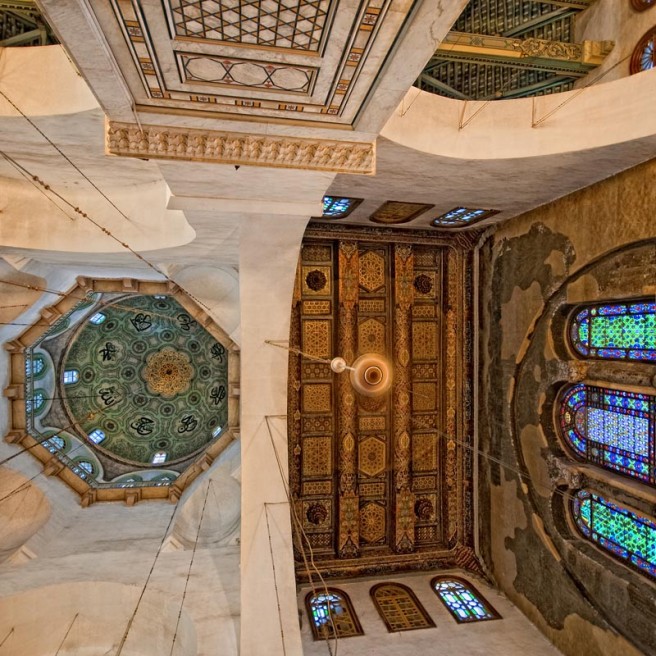… The peculiarity of Persian and Arabian architecture is the dome, which is called in Arabic the gunbad and the mehrab. Gunbad means dome, and mehrab means an arch used in windows and doors which is not exactly round, but is formed of three or five parts; in other words, in five half-circles with the top made by two lines going upward and joining in the center. The mystics of Arabia gave the interpretation of this form. They called it qasab-e kousein, which means "the meeting of the eyebrows". When a person looks upward, naturally his eyebrows come closer to each other. The idea is that as the spirit soars upward, the tendency of the soul is to rise from duality to unity. By working with these two particular forms, they have arrived at such perfection that if the same form were continued for a hundred thousand years, one could never tire of it.
… It is very difficult to describe modern architecture. We hesitate to call it beautiful; but to say that it is not beautiful – no, we cannot say that! So instead of calling it beautiful, we might call it wonderful. If there is any wonder, it is in the immensity of the buildings. They are indeed enormous; the ancient people would never even have dreamed of such buildings. They would be horrified if they saw them. They are also wonderful in spite of the many floors they consist of, and yet they stand so firmly. And then the way in which everything possible is pre-fabricated in order to build very quickly – all this is most wonderful. Yet it is a drawback that only vertical and horizontal lines are to be seen; and when a traveler passes through countries where he finds the same kind of architecture in every city, it is just like looking at the same house over and over again – there is no difference. Instead of wandering through the city, he might just as well look at one house and be contented with that. Everyone must have the same kind of house built on the same plan, but we are not all made that way. Every person is different, and that is what makes life interesting. When every person is different, why should not every house and building be different? As the architecture of each country is expressive of the character of that country, so the architecture of each house should be expressive of the particular character of the owner of the house, and of the man who built it. But when the law of uniformity is forced upon people, there remains no choice in the matter – the choice has been taken away from the architect as well as from the owner of the house.
No doubt one sees a continual effort on the part of modern architects to produce something new. It seems that this effort is working as much in their minds as in the minds of painters and other artists; the need is to produce, to create something new. No matter what direction architecture takes, before long there will come a time when a better approach will be found. But what is necessary for this is the development of spirituality. The architect should not think that it is the study of different architectures that will make him capable of producing something new; it is the heart, it is the spirit, which must reveal to him what he should create. The work of the architect is of the greatest importance; it comes through inspiration and its origin is spirit, not matter. A house is built with matter, but made with spirit. And as the spirit of the world evolves, so architecture will evolve also.
In the future, one can foresee two improvements. One will be the giving of more scope to the personality of the individual to express itself. The other will be the evolution of an architecture which does not discard all that belongs to the past, but blends some of its best characteristics with the architectural conceptions of the present.
Excerpt from: Sufi Poetry and Lectures ~ by Hazrat Inayat Khan (r.a)
Volume X - Sufi Mysticism - Architecture (2) - ART, YESTERDAY, TODAY, AND TOMORROW



















